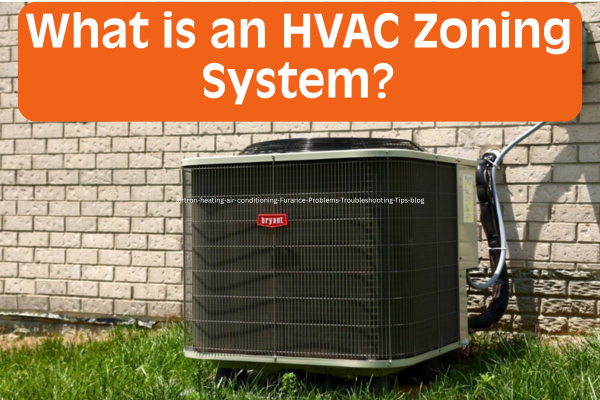A Guide to HVAC Zoning Systems
Energy Efficiency & Cost Savings HVAC Technology & Innovations

How to Save Money and Energy with an HVAC Zoning System
Your HVAC system has a pretty big job to do. It’s tasked with keeping you cool during the extreme summer heat and warm in frigid winter temperatures. You need a system that can achieve this while being as effective and efficient as possible. You’re probably looking for a solution that can save you money in the long run, as well as reduce your energy consumption. An HVAC zoning system may just fit the bill, due to the way it heats and cools different parts of your home as your needs and preferences demand. Ready to learn more? Let’s find out how zoned heating and cooling can improve your home comfort and boost your energy savings.
What is an HVAC Zoning System?
First, we have to understand exactly what a zoned HVAC system is. Think of every part of your home as a different “zone.” You might have a communal zone that includes living and dining spaces, and a sleep zone that includes your bedrooms. A large kitchen might require its own zone to keep temperatures from getting too warm while cooking and baking. And in multi-story homes, residents likely find that even with the thermostat set at a steady temperature, the feel can vary greatly from one level to the next.
An HVAC zoning system works to heat or cool specific zones of the home as needed, so you can have more control over your comfort level while improving energy efficiency.
How it Differs from Traditional HVAC Systems
Typically, your cooling system or heat pump works to deliver air throughout your entire home, while a central thermostat monitors the temperature. That thermostat reads the room temperature in the surrounding environment and switches on and off in order to maintain it. Thermostats can also be adjusted manually. However, a thermostat can only get an accurate temperature reading from the area of the home in which it is positioned. That means other areas of the home could be too warm or too cold.
Additionally, traditional HVAC systems move air through the entire home at once, typically using your existing duct system. This means rooms you aren’t using are also being heated or cooled when it isn’t necessary. This increases the wear and tear on your HVAC unit and makes it less efficient. It also results in higher energy bills, as you’re constantly controlling the climate of the entire house.
A zoned HVAC system works differently in that it only heats or cools specific areas of the home. It also uses multiple thermostats for accurate temperature readings and more control in each zone.
How an HVAC Zoning System Works
Much of the equipment in an HVAC zoning system is the same as you would find in any other home. A zoned system frequently uses a home’s existing duct system, but it can be ductless as well. Most of the time, your existing HVAC system can be retrofitted to operate as a zoning system.
Key Components of a Zoned HVAC System
The critical components of any zoning system include:
- Thermostats: A zoning system includes multiple thermostats to monitor the temperature in each of your home’s pre-determined zones.
- Control Panel: All thermostats are connected to a single central control zone panel, which determines the actions your HVAC system will take to heat and cool your home.
- Dampers: The control panel operates zone dampers installed in your home’s ductwork, which direct the heated or cooled air into the specific zones.
Each thermostat allows you to create a temperature zone for a specific part of your home. The dampers open or close depending on the thermostat settings for that zone. As a result, you can customize the temperature of each area to meet your needs. This creates a more comfortable environment for you and your family, increases the efficiency of your HVAC system, and saves you money and energy.
The Heating and Cooling Process in a Zoned System
How your HVAC zoning system works is really up to you. It is highly customizable to meet your very specific comfort needs. To begin, you would have to decide how to break your home into zones. For example, in a three-story home that includes a basement, you might find that the temperature fluctuates significantly from the cooler lower level to the warmer top level. In that case, you may want to divide every floor of the home into its own zone. Or, if you work from home and have a dedicated office space, you may decide to create a zone just for that, so you can stay comfortable during the workday without heating or cooling the rest of the home.
Once you decide on your number of zones, a thermostat will be installed in each, so it can accurately monitor the temperature. A control panel will be installed in a central location, so you can easily access it and make adjustments to each zone. The biggest change will be to your ductwork, in which dampers will be installed to direct air. This will be the case if you already have central air and central heating in your home. However, if you have a ductless system, those dampers will be installed at the air outlet.
With your full HVAC zoning system in place, you’ll be able to adjust the temperature of various parts of your home as needed throughout the day. You can set temperatures to follow the cycle of the sun, so that parts of your home that are in full sun in the morning are cooled early on, while other parts of your house aren’t cooled until later in the afternoon, when they begin to warm up.
Benefits of an HVAC Zoning System
Due to its personalization capabilities, a zoning system offers many advantages, which include:
- Greater control: The system gives you greater control over your home’s comfort. You have more flexibility to control the temperature in different areas of your home.
- Increased comfort: Different members of your household probably feel more comfortable at different temperatures. The system allows one member to increase or reduce the temperature in an area without affecting other family members.
- Increased efficiency: Heating or cooling all rooms equally is like lighting all bulbs in your home when you only need light in one room. In both cases, you’re wasting energy. With a zoned system, you only send heated or cooled air to the rooms you’re using, so you don’t waste energy on empty spaces. This helps you save money on your energy bills.
- Longer HVAC system life: Your HVAC system experiences less wear and tear because it doesn’t always heat or cool your entire home. This leads to longer life expectancy.
Boosting Efficiency with a Smart or Programmable Thermostat
You can see how an HVAC zoning system can improve efficiency and conserve energy, but you can actually take it up an extra level and save even more.
How a Programmable Thermostat Enhances a Zoning System
Smart thermostats have been around for a while now. Most of the time, a programmable thermostat is connected to an app which you can operate from your smartphone. The same is true for a zoned HVAC system’s thermostat as well. This means you can monitor and control temperatures from anywhere, even when you’re not at home. Some smart thermostats can even track your usage and make adjustments based on your schedule.
Additional Energy Savings with Automation
Your programmable thermostat likely has automation features built in, so it can turn back the temperature for specific zones when you’re not using them. You can also set your own schedule, making specific adjustments based on when you and your family will be home or away. Automating your daily temperature results in energy savings, and it will likely result in cost savings as well.
Is an HVAC Zoning System Right for Your Home?
How do you know if a zoned HVAC system is the right choice for you and your family? Here’s what you should keep in mind:
Key Factors to Consider Before Installation
Consider the following when evaluating whether it makes sense to install a zoning system in your home:
- Size: Larger homes may have more areas that require different temperature levels to stay comfortable.
- Layout: Single-story homes may be easier to keep at a consistent temperature with a single thermostat.
- Usage: Think of how many people live in your home, how frequently they are there, and what their individual preferences are.
- Compatibility: Consider if your home’s existing ductwork is suitable for an HVAC zoning system. If you have a ductless system, be sure to check on how that would differ and what that would mean.
Ideal Homes for Zoning Systems
Certain homes are better candidates for zoned HVAC systems. These might include:
- Large or multi-level homes
- Homes with many or very large windows
- Homes with sunrooms
- Residences with extreme temperature fluctuations due to weather or sun exposure
- Multi-family or multi-generational homes with people living in different areas like mother-in-law suites or guest apartments
- Homes with spaces that are rarely used
Installation and Maintenance Tips
Switching to a zoned HVAC system is a big decision, and it’s best to be prepared before you take the leap. Here’s what you need to consider before going forward with an HVAC zoning system:
Importance of Installation by HVAC Professionals
This isn’t a DIY project for homeowners — you’ll need a professional HVAC contractor you can trust. A skilled team will install everything correctly, follow local safety codes, and make sure your home stays safe. They’ll also set up your thermostats and control panel properly, show you how to use them for the best comfort and energy savings, and explain any warranties that come with your new system.
Routine Maintenance for Maximum Performance
Regular maintenance is important for any HVAC system. It’s a good idea to schedule a yearly check-up with your HVAC provider to make sure your control panel, thermostats, and dampers are all working properly. Keeping your air ducts clean is also important, so you might want to use a cleaning service to help with that. And don’t forget to change your filters regularly, as this helps keep dust out of your ducts and prevents blockages.
Upgrade Your Comfort with an HVAC Zoning System
If you want to increase energy efficiency, save money, and enjoy an optimally comfortable home, an HVAC zoning system could be the best choice for you and your family. Remember that you can reap more benefits and save more money on your utility bills by pairing a zoning system with a programmable thermostat. It’s a lot to consider, but you aren’t in this alone. At Airtron, we are just as invested in your comfort as you are. For more information on how to heat and cool your home with zoning systems, contact us at Airtron Heating & Air Conditioning today!


